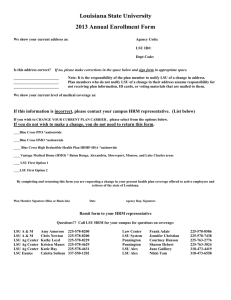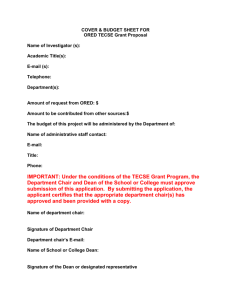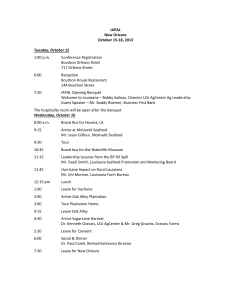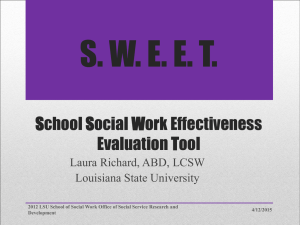Louisiana State University
advertisement
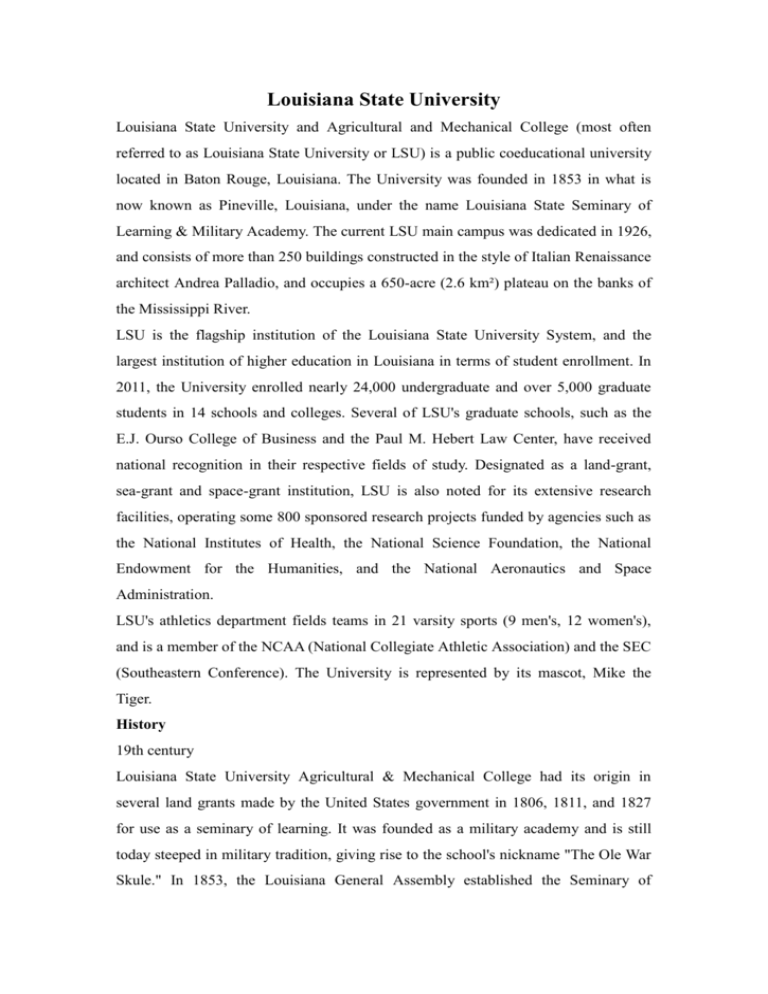
Louisiana State University Louisiana State University and Agricultural and Mechanical College (most often referred to as Louisiana State University or LSU) is a public coeducational university located in Baton Rouge, Louisiana. The University was founded in 1853 in what is now known as Pineville, Louisiana, under the name Louisiana State Seminary of Learning & Military Academy. The current LSU main campus was dedicated in 1926, and consists of more than 250 buildings constructed in the style of Italian Renaissance architect Andrea Palladio, and occupies a 650-acre (2.6 km²) plateau on the banks of the Mississippi River. LSU is the flagship institution of the Louisiana State University System, and the largest institution of higher education in Louisiana in terms of student enrollment. In 2011, the University enrolled nearly 24,000 undergraduate and over 5,000 graduate students in 14 schools and colleges. Several of LSU's graduate schools, such as the E.J. Ourso College of Business and the Paul M. Hebert Law Center, have received national recognition in their respective fields of study. Designated as a land-grant, sea-grant and space-grant institution, LSU is also noted for its extensive research facilities, operating some 800 sponsored research projects funded by agencies such as the National Institutes of Health, the National Science Foundation, the National Endowment for the Humanities, and the National Aeronautics and Space Administration. LSU's athletics department fields teams in 21 varsity sports (9 men's, 12 women's), and is a member of the NCAA (National Collegiate Athletic Association) and the SEC (Southeastern Conference). The University is represented by its mascot, Mike the Tiger. History 19th century Louisiana State University Agricultural & Mechanical College had its origin in several land grants made by the United States government in 1806, 1811, and 1827 for use as a seminary of learning. It was founded as a military academy and is still today steeped in military tradition, giving rise to the school's nickname "The Ole War Skule." In 1853, the Louisiana General Assembly established the Seminary of Learning of the State of Louisiana near Pineville, Louisiana. The institution opened January 2, 1860, with Colonel William Tecumseh Sherman as superintendent. A year later, Sherman resigned his position after Louisiana became the sixth state to secede from the Union, on January 26, 1861. The school was forced to close on June 30, 1861, with the start of the American Civil War. During the course of the war, the University reopened briefly in April 1863, but was closed once again with the invasion of the Red River Valley by the Union Army. The losses sustained by the institution during the Union occupation were heavy, and after 1863 the seminary remained closed for the remainder of the Civil War. Following the surrender of the Confederates at Appomattox Court House on April 9, 1865, General Sherman donated two cannons to the institution. These cannons had been captured from Confederate forces after the close of the war and had been used during the initial firing upon Fort Sumter in April 1861. The cannons are still displayed in front of LSU's Military Science building. The seminary officially reopened its doors on October 2, 1865, only to be burned October 15, 1869. On November 1, 1869, the institution resumed its exercises in Baton Rouge, where it has since remained. In 1870, the name of the institution was officially changed to Louisiana State University. Louisiana State University Agricultural & Mechanical College was established by an act of the legislature, approved April 7, 1874, to carry out the United States Morrill Act of 1862, granting lands for this purpose. It temporarily opened in New Orleans, June 1, 1874, where it remained until it merged with Louisiana State University in 1877. This prompted the final name change for the University to the Louisiana State University and Agricultural & Mechanical College. 20th century On June 7, 1925, Oscar B. Turner, a professor of agronomy, was murdered by an axe-wielding assailant on campus. On April 30, 1926, the present LSU campus was formally dedicated, following the school's history at the federal garrison grounds (now the site of the state capitol) where it had been located since 1886. Prior to this, LSU utilized the quarters of the Institute for the Deaf, Mute, and Blind. Land for the present campus was purchased in 1918, construction started in 1922, and the move began in 1925; however, it was not until 1932 that the move was finally completed. After some years of enrollment fluctuation, student numbers began a steady increase, new programs were added, curricula and faculty expanded, and a true state university emerged. In 1928, LSU was a small-time country school that generated little interest or attention in the state. Labeled a "third-rate" institution by the Association of State Universities, the school had only 1800 students, 168 faculty members, and an annual operating budget of $800,000. In 1930, Huey Pierce Long, Jr., the governor of Louisiana, initiated a massive building program on campus to expand the physical plant and add departments. By 1936, LSU had the finest facilities in the South, a top-notch faculty of 394 professors, a new medical school, more than 6,000 students, and a winning football team. In only eight years, it had risen in size from 88th in the nation to 20th, and it was the 11th largest state university in the nation. Long financed these improvements by arranging for the state to purchase acreage from the old LSU campus, which adjoined the grounds of the new State Capitol building in downtown Baton Rouge. To the consternation of his critics, Long essentially diverted $9 million for LSU's expansion and increased the annual operating budget to $2.8 million. LSU was hit by scandal in 1939 when James Monroe Smith, appointed by Huey Long as president of LSU, was charged with embezzling a half-million dollars. In the ensuing investigation, at least twenty state officials were indicted. Two committed suicide as the scandal enveloped Governor Richard W. Leche, who received a 10-year federal prison sentence as a result of a kickback scheme. Paul M. Hebert, Dean of LSU's law school at the time, then assumed interim presidency in Smith's place. During World War II, LSU was one of 131 colleges and universities nationally that took part in the V-12 Navy College Training Program which offered students a path to a Navy commission. Although some African-Americans students tried to enroll in LSU in 1946, the university did not admit African-Americans until the 1950s. In 1953 A. P. Tureaud, Jr. enrolled under court order, but his enrollment was cancelled when a higher court overturned the ruling. His case was ultimately decided by the U.S. Supreme Court. Tureaud returned to LSU in 1956. A classroom building on the LSU campus is named for his father, the late A. P. Tureaud, Sr., a noted Civil Rights leader. The federal courts mandated full integration for LSU in 1964. The first African-American graduate of the LSU Law School was New Orleans's first African-American mayor, the late Ernest N. "Dutch" Morial. In 1969, mandatory ROTC for freshmen and sophomores was abolished; however, LSU continues to maintain Air Force and Army ROTC. In 1978, LSU was named a sea-grant college, the 13th university in the nation to be so designated. In 1992, the LSU Board of Supervisors approved the creation of the LSU Honors College. 21st century In the aftermath of Hurricane Katrina, LSU accepted an additional 2,300 displaced students from the greater New Orleans area, such as Tulane University, Loyola University New Orleans, Xavier University of Louisiana, and University of New Orleans. In addition to accepting displaced students, university officials also took on the challenge of housing and managing many hurricane victims, converting the Pete Maravich Assembly Center into a fully functional field hospital. Around 3,000 LSU students volunteered during the months after Katrina, assisting with the administration of medical treatment to some 5,000 evacuees and screening another 45,000 for various diseases. In 2007, long-time LSU System president William Jenkins announced his retirement, and John V. Lombardi was named his replacement. He was previously the president of the University of Massachusetts Amherst and LSU rival University of Florida. The current chancellor of LSU, Dr. Michael V. Martin, assumed chancellorship on August 1, 2008. Prior to his appointment as LSU's eighth chancellor, Dr. Martin had established a distinguished career in higher education, serving most recently as president of New Mexico State University. Rankings Louisiana State University is ranked 134th in the national universities category and 67th among public universities by the 2013 U.S. News & World Report ranking of U.S. colleges. LSU is also ranked as the 179th best overall university in the nation by Forbes magazine and is featured in the 2011 edition of Princeton Review's Best 371 Colleges guide. Additionally, U.S. News & World Report ranked LSU as the 16th most popular university in the nation. LSU was listed for academic censure by the national Association of University Professors for its alleged mistreatment of faculty on June 16, 2012. Programs that have received recognition within LSU include the following: The E. J. Ourso College of Business has two professional programs ranked by U.S. News & World Report: in 2008, the Public Affairs Institute ranked 57th nationally and 40th among public universities according to the magazine, and the Flores MBA program was ranked 62nd nationally and 33rd among public universities. Additionally, LSU students have won the International Student High Achievement Award, an accolade given to students who score the highest possible score on the Certified Internal Auditor (CIA) exam, seventeen times during the last twenty-one years. In 2007, the Flores MBA Program was ranked seventh in the nation "for attracting corporate MBA recruiters who recruit regionally" by the Wall Street Journal. The LSU College of Engineering undergraduate program was ranked 85th by U.S. News & World Report while the graduate program was ranked 90th. The Paul M. Hebert Law Center is ranked as the 75th best law school in the nation by the 2010 U.S. News Rankings of Best Law Schools. In 2009, Entrepreneur Magazine ranked LSU among the top 12 Entrepreneurial Colleges and Universities in the nation. The University's Robert S. Reich School of Landscape Architecture was ranked No. 1 nationally in undergraduate and No. 2 in graduate programs by DesignIntelligence in its 2011 and 2012 editions of "America's Best Architecture & Design Schools". The journal has ranked the school in the top five since 2004. The LSU College of Education graduate program was ranked 91st in the nation by U.S. News & World Report. The LSU French program, comprising the Department of French Studies and the Center for French and Francophone Studies, is recognized by the Cultural Services office of the French Ambassador to the United States as a centre d'excellence, an honor given to only 15 university French programs in the United States, and is ranked as one of the top 20 undergraduate French programs in the nation. The LSU graduate program in fine arts is ranked 76th in the nation by U.S. News & World Report. The LSU graduate program in library and information studies is ranked 22nd in the nation by U.S. News & World Report, tied with the programs at San Jose State University, University of Alabama, and University of Oklahoma.

